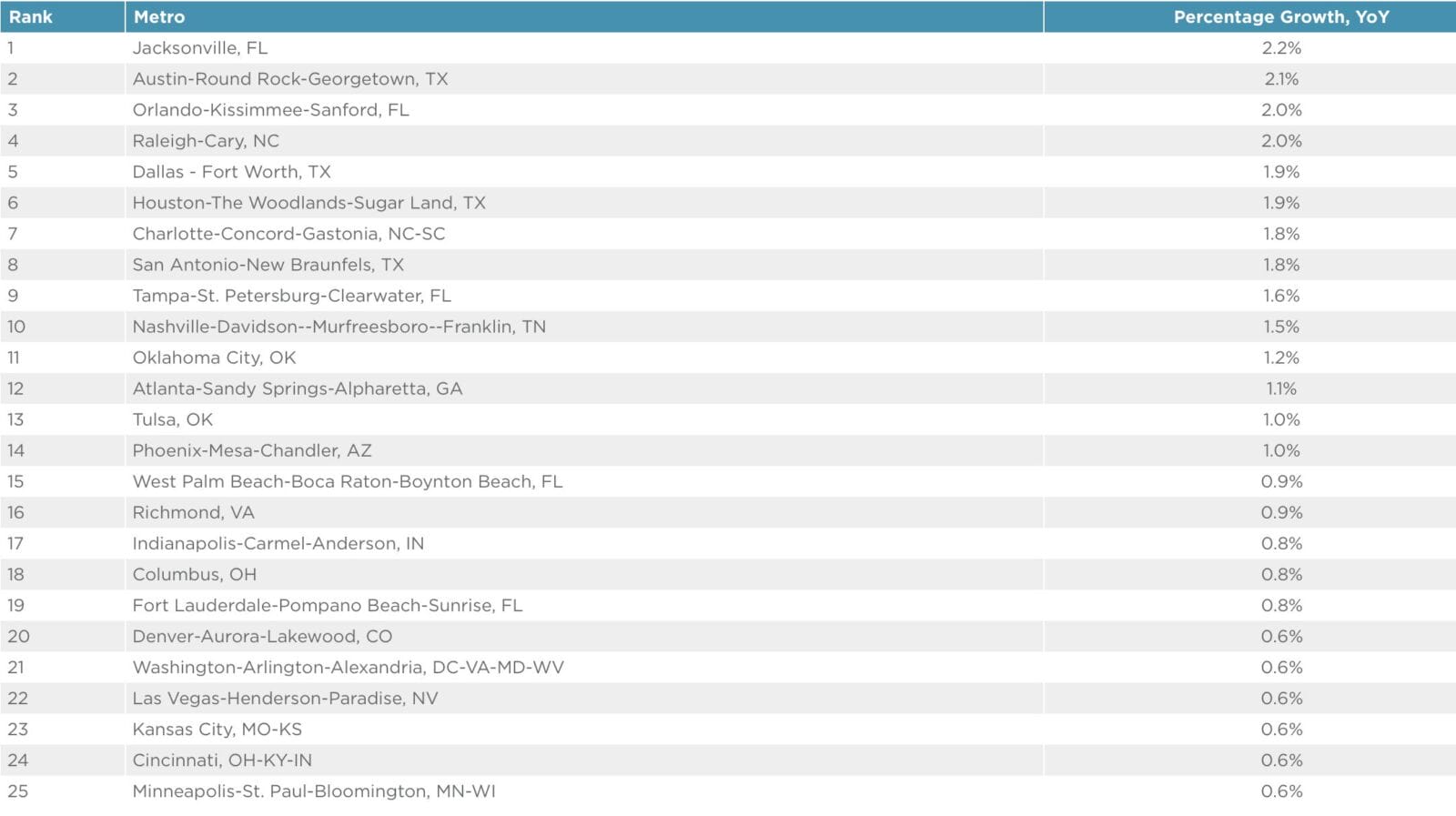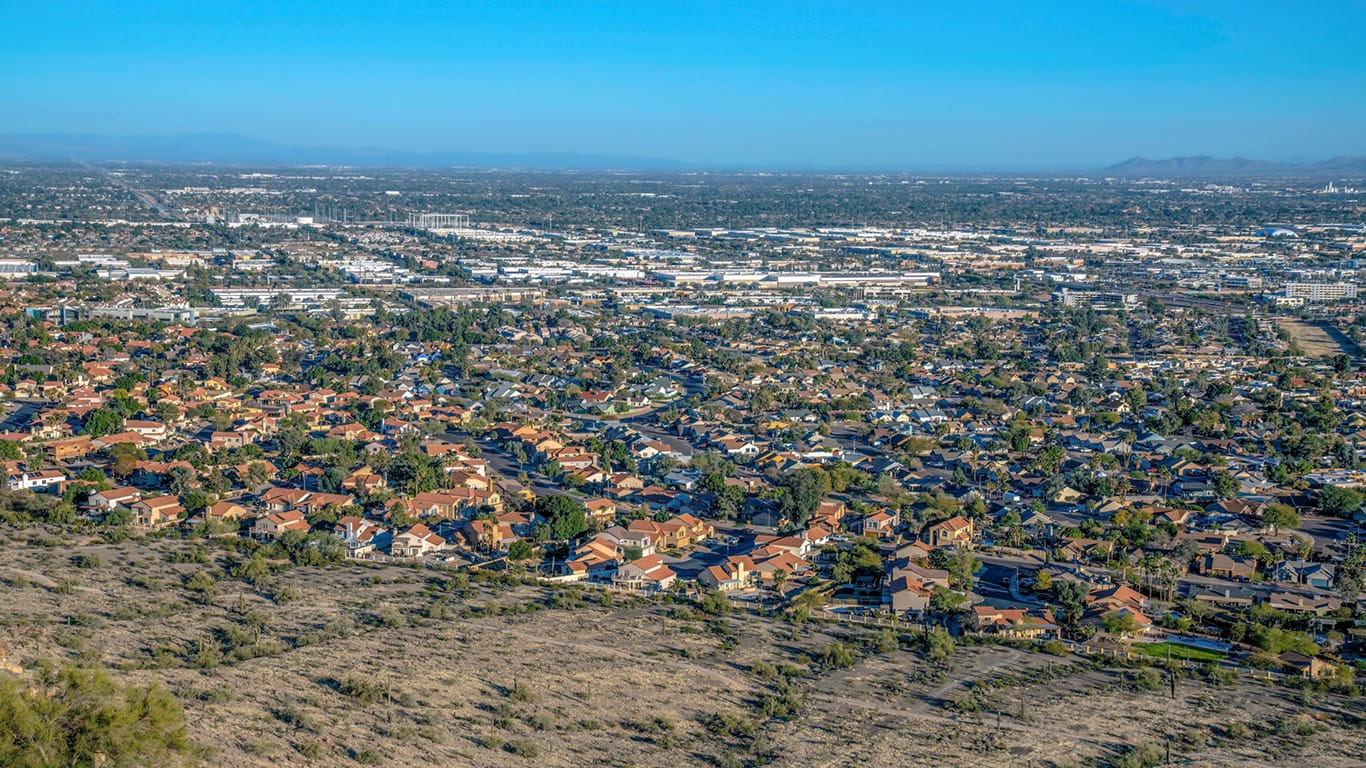Cushman & Wakefield’s analysis of the U.S. Census Bureau’s latest data highlights key trends affecting commercial real estate with some notable surprises and new patterns emerging. Of note, the Phoenix-Mesa-Chandler Metro ranked No. 14 of every major market (population over 1 million) in the U.S. with a Percentage Growth, YoY of 1.0% and was No. 4 with a Nominal Growth, YoY of 54,916.
LEARN MORE: Ranking Arizona: Top 10 master-planned communities for 2024
The U.S. Census Bureau recently released new population estimates that detail growth across the U.S., broken down at a county level. This data highlights key trends affecting commercial real estate across asset classes and continues to drive investment theses. While the overall theme may feel familiar—the southern U.S. continues to see the bulk of the population growth—there are some notable surprises in the data, with new trends emerging for the years ahead.
An important caveat: This data encompasses population changes for the second half of the prior year, and the first half of the given year. In other words, when referring to 2023 population growth, the data referenced would include the second half of 2022 and the first half of 2023.
Unsurprisingly, every major market (population over 1 million) that grew by more than 1% in the U.S. was in the Sun Belt. However, for the first time in 12 years, Austin, Texas, no longer leads the nation in population growth on a percentage basis. The top market is Jacksonville, Florida, which grew at 2.2%—up from 1.5% a year ago and rank fourth at the time. Austin still ranks second, with 2.1% growth, and remains the fastest-growing major metro in the country since 2020, having grown 7.5% since then. The next fastest-growing market in that time frame is Raleigh, North Carolina, which has grown by 6.5% over that same time frame.
Year-over-year nominal growth

Year-over-year percentage growth





